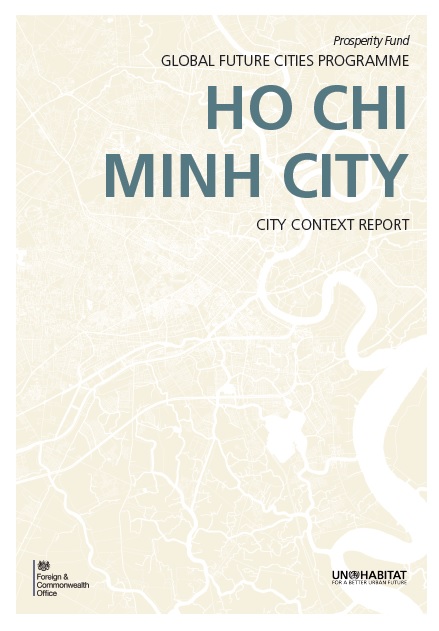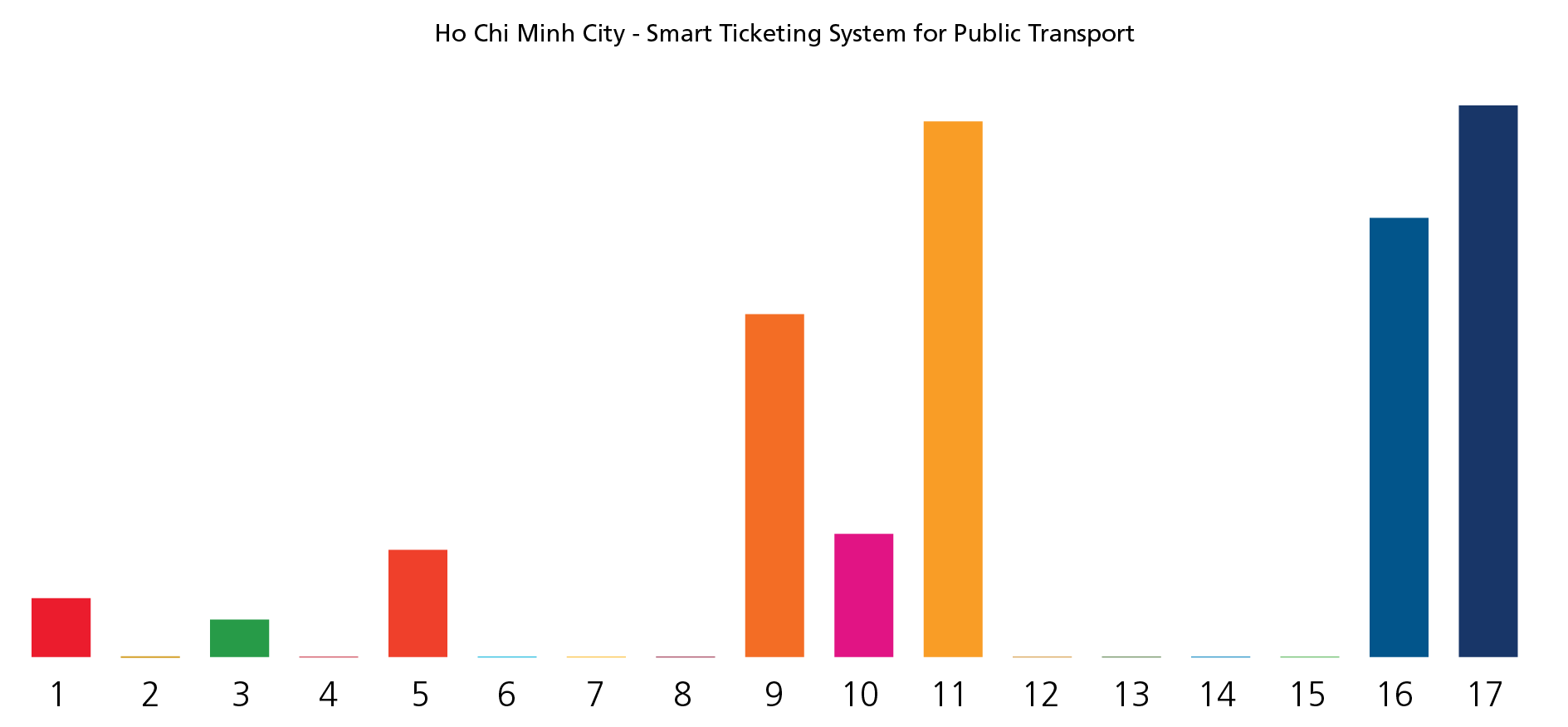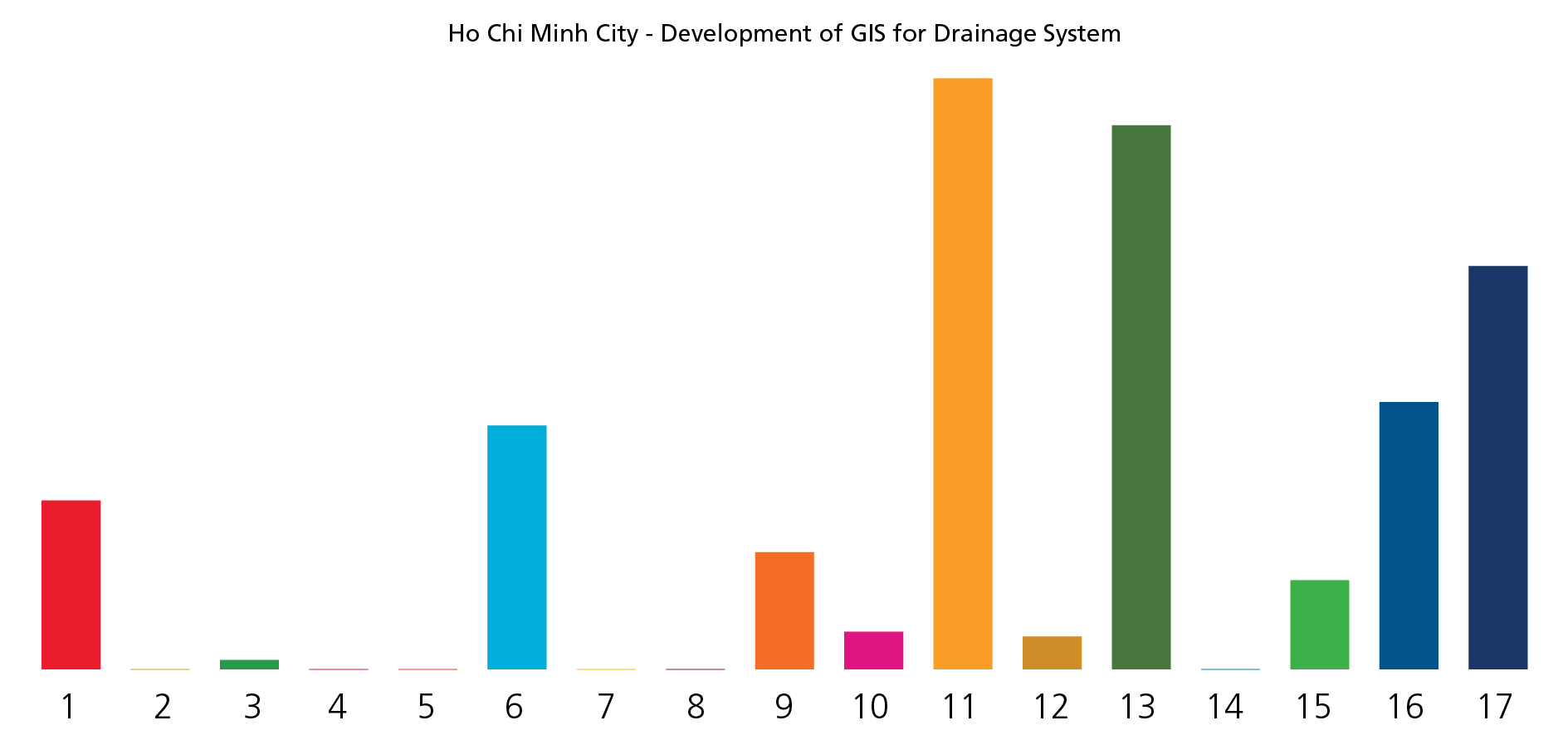Overview
Ho Chi Minh City is the largest city in Vietnam with a population of 8.4 million. It is located in the south of Vietnam and is at the core centre of Ho Chi Minh City Metropolitan Area, which has a population that exceeds 20 million, 16 million of whom live in urban areas. The city is currently undergoing a period of strong economic and population growth; as it is the economic and financial hub of Vietnam, it continues to attract migrants from other provinces. The shift from a Socialist to an open market economy has also encouraged the growth of private enterprises in Ho Chi Minh City (HCMC); it currently accounts for 23 per cent of Vietnam’s gross domestic product (GDP) and 20 per cent of foreign direct investment. HCMC currently faces many issues caused by rapid population growth and subsequent land-use change; the most notable being insufficient mobility and flooding. HCMC is in an intra-tropical zone and has a relatively low elevation that makes it vulnerable to many of the adverse impacts of climate change. The location of HCMC has also further aggravated the impacts of flooding; being situated along the coast makes the city susceptible to storm surges. Due to the rapid population and spatial growth of the city, future risks are likely to be further exacerbated. The two projects identified are: the development of a Smart Ticketing System for Public Transportation Network, and the development of a Geographical Information System for the Drainage System.
Highlighted Publication

Ho Chi Minh City Context Report
Download Document
Challenges
Projects
1 Development of a Smart Ticketing System for Public Transportation Network
View DetailsHo Chi Minh City’s residents are heavily reliant on motorbikes for transport as they are considered the most convenient by offering door-to-door service and the ability to park anywhere within HCMC. Currently, there is a low use of public transport in the city; only 4 per cent of residents use buses. Apart from the dominance of private vehicles, many residents are dissatisfied by the current coverage of the bus network. The ticketing system also limits public transport use; the current fares are not affordable and do not promote buses.
There has been interest by Ho Chi Minh City’s People’s Committee (HCMC-PC) to increase public transport ridership by 2025 to reach 20-25 per cent of the city’s transport demand. With this in mind, the current management centre requires capacity building and support in anticipation for the new routes. There is perceived interest in introducing a smart ticketing system for the current public transport routes; the ticketing system will integrate the bus operators into a single ticketing system and will allow the integration of the upcoming routes (MRT, BRT and monorails). The smart ticketing system will aim to optimise public transport routes by enhancing collaboration amongst bus operators, while enhancing the reliability of public transport to increase ridership.
Project Timeline
-
Charette
August 2018 -
Validation Workshop
November 2018 -
MoU signing
January 2019 -
Kick-off Meetings
November 2019 -
SDG Project Assessment Tool Tailoring Workshop
February 2020 -
First SDG Assessment Session
October 2020
SDG TOOL

2 Development of a Geographical Information System for the Drainage System
View DetailsHo Chi Minh City (HCMC) ranks among the ten cities most affected by climate change as 45 per cent of land in HCMC is less than 1 metre above sea level. Large parts of the city are exposed to floods on a regular basis, causing economic damage to key infrastructure. Canals and drains have been set up to help mitigate flooding and allow water drainage built during the French era to meet the demand of a population of what was then 2 million. The system has since been expanded but it still does not meet the demand of the growing population. The current database of drains and canals is facing several issues concerning data management and reliability; it has not been updated regularly to match the current status of the drains and many documents have also been lost or damaged due to the war, resulting in critical gaps. This is crucial as the current system is at the edge of its capacity and, without a database, the city will not be able to expand the canals and drain network. The project hence proposes to develop an inventory that compiles the information on the canals and drains network, which is updated regularly. It will provide a framework for the city to expand its network of canals and drains in the future, while also providing technical assistance and mechanisms on data management and sharing between multiple agencies.
Project Timeline
-
Charrette
August 2018 -
Validation Workshop
November 2018 -
MoU signing
January 2019 -
Kick-off Meetings
November 2019 -
SDG Project Assessment Tool Tailoring Workshop
February 2020
SDG TOOL

